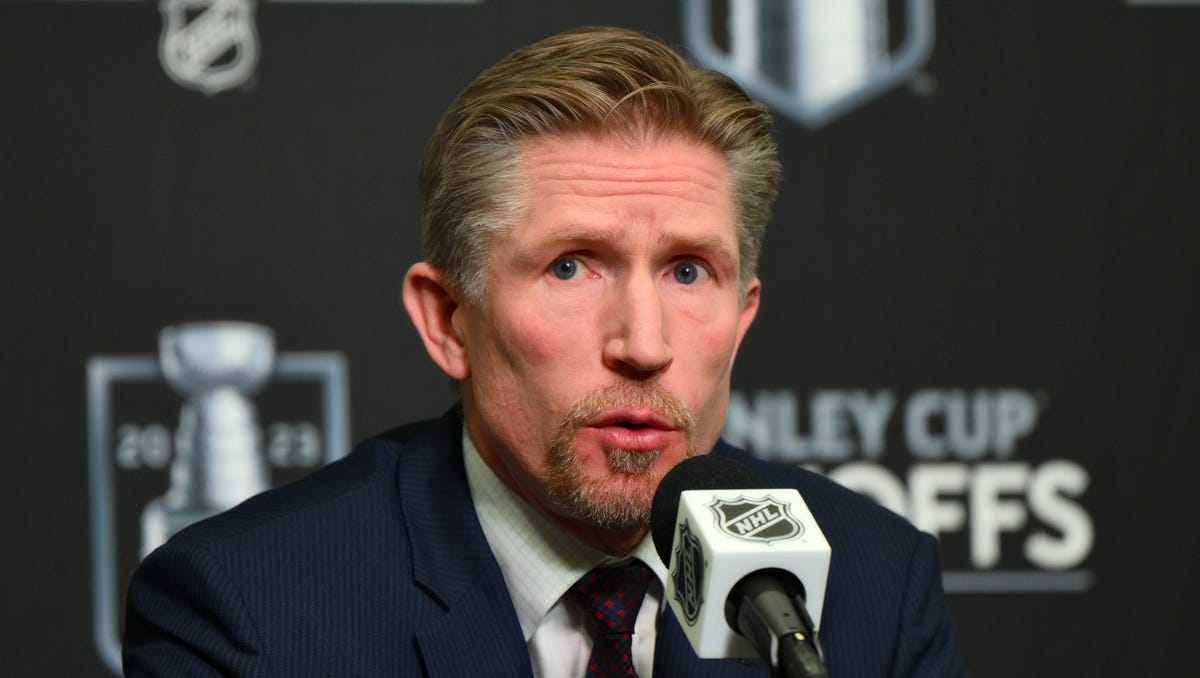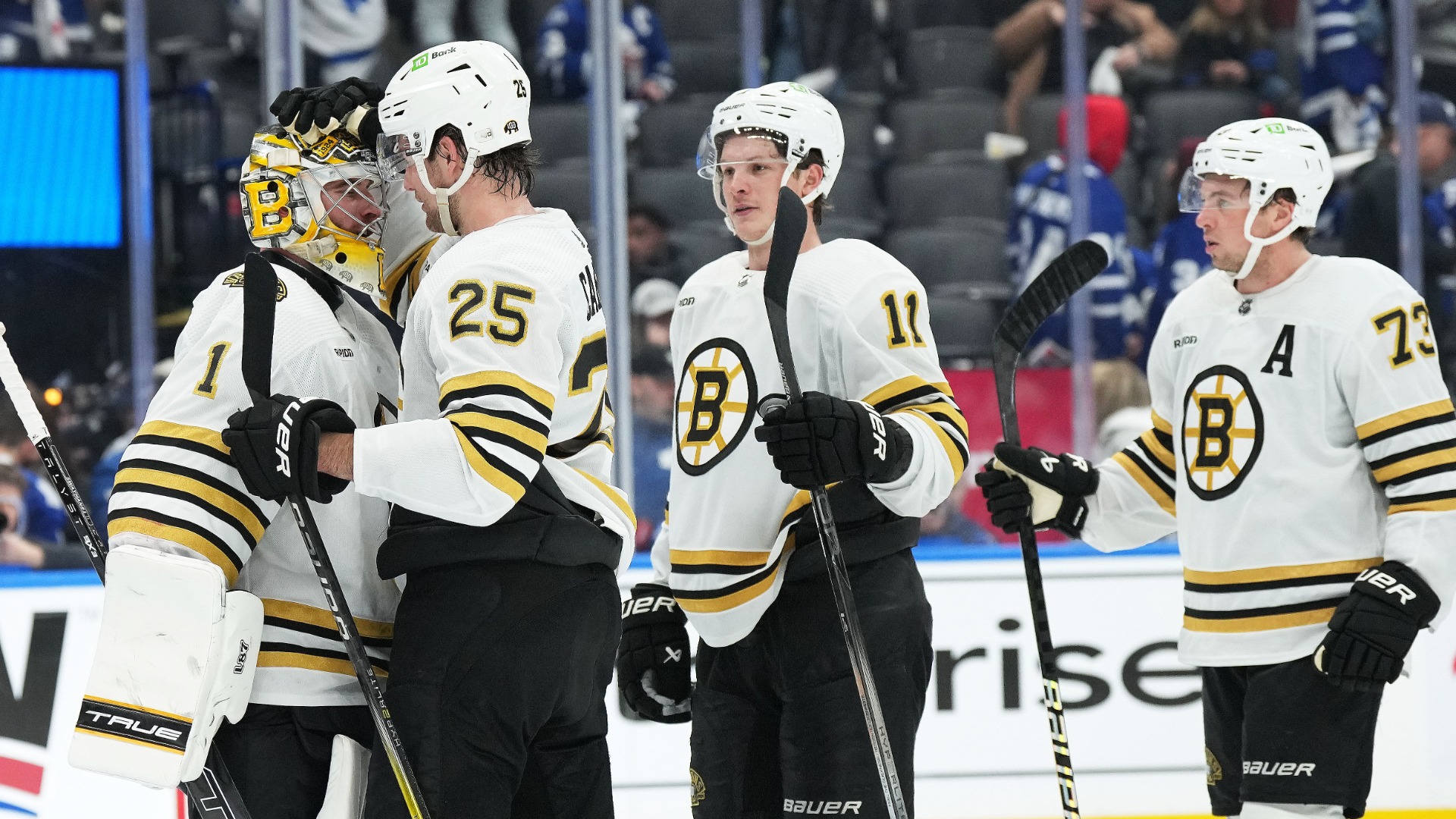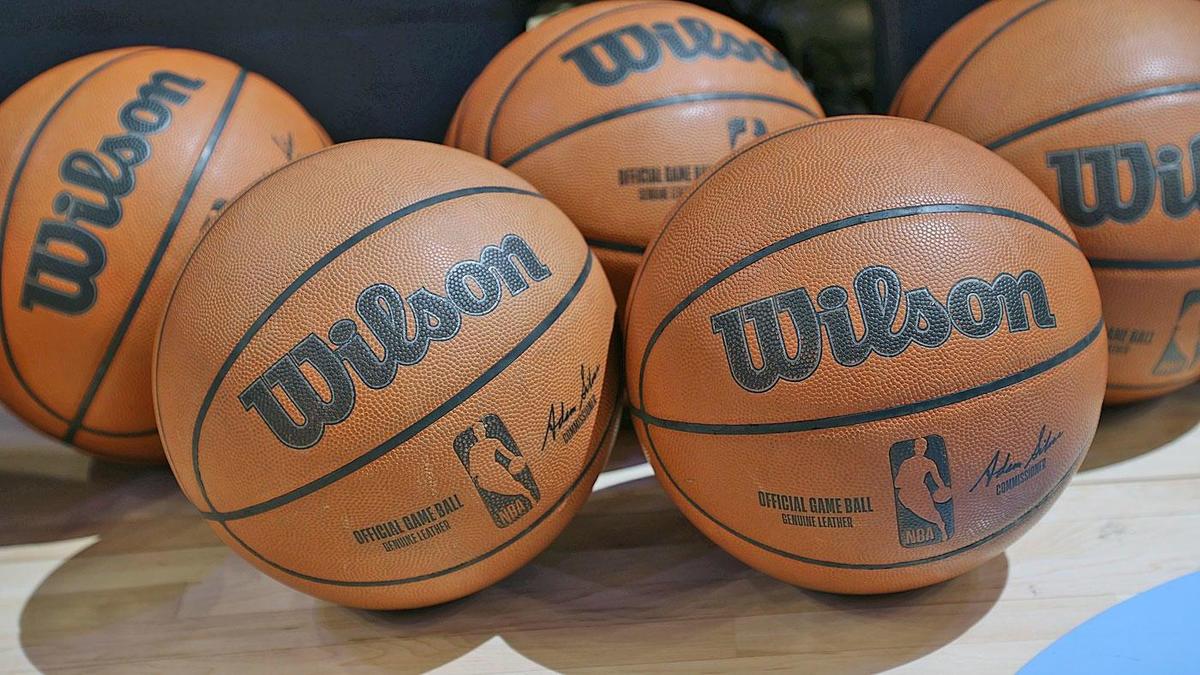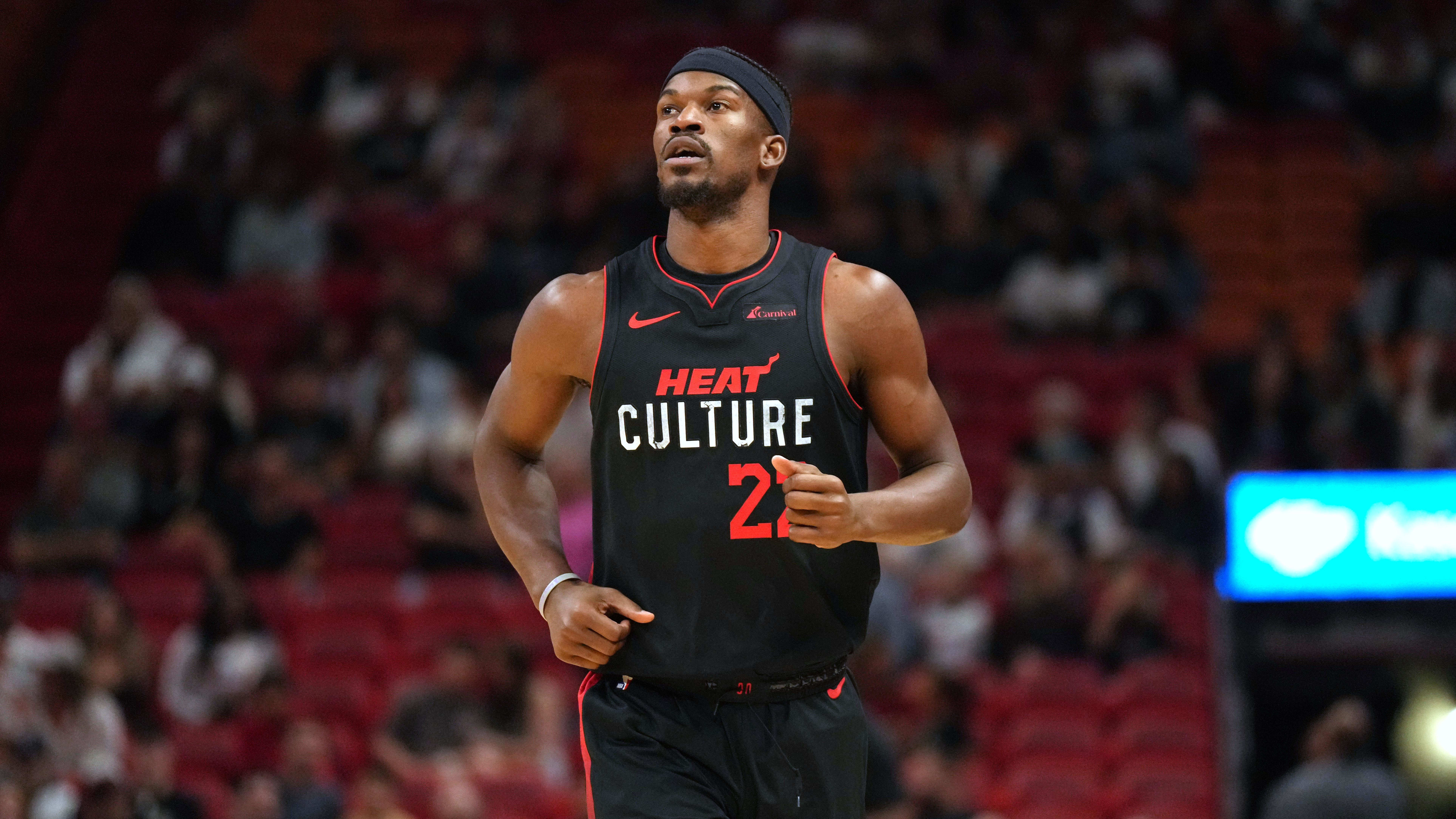Sports
Blackhawks wunderkind Connor Bedard dazzles fans and defies age in rookie campaign

Connor Bedard wasn’t nervous when he pulled on a Team Canada sweater and stepped onto the ice at the World Junior championships, the weight of a hockey-mad country’s expectations resting squarely on his shoulders. He wasn’t nervous when NHL deputy commissioner Bill Daly kept flipping over placards with NHL team logos on them after the draft lottery, Bedard’s fate and his future resting face-down at the bottom of the pile. Honestly, he wasn’t even all that nervous the first time he donned a Chicago Blackhawks jersey in a real game and settled in at the opening faceoff dot against his idol, Pittsburgh Penguins megastar Sidney Crosby.
Hockey’s familiar. Hockey’s comfortable. Connor Bedard knows hockey.
But standing in the entryway of Nick Foligno’s house in Chicago on a September evening, fidgeting and shuffling and making meager attempts at small talk with Nick and his wife, Janelle, who had invited the new guy over for a nice family dinner?
Yeah, Bedard was nervous.
“I don’t think (it’s) intimidating,” Bedard said of his first forays into the world of grown-ups. “I didn’t know anyone, so you’re kind of nervous about that. Just how I’m going to fit in and stuff.”
The way Foligno remembers it, Bedard quickly started talking about hockey and seemed almost desperate to put some kind of sports on television to focus on. Hey, Foligno might be 36 years old now, but he was a young hockey player once. He remembers being in the Ontario Hockey League as a teenage standout, watching NHL games every night and flipping to the “On The Fly” highlight show on NHL Network. He wasn’t having grand conversations about life and family and the world over elegant dinners. So he knew how awkward this was for Bedard.
Then Foligno’s three kids barreled down the hallway, immediately challenging the world’s most famous 18-year-old hockey player to a game of mini-sticks. Bedard was on his knees battling for loose pucks almost instantly.
“That just broke the ice,” Foligno said. “He’s just goofing around with them, and they’re loving it, they’re laughing. Then while they’re playing, I said to Janelle, ‘You know, I think he’s closer to their age than mine.’”
That’s how it hits you — suddenly, out of nowhere, frequently. Bedard’s 18. Won’t turn 19 until July 17, closer to the start of next season than the end of this one. He’s the 14th-youngest player in NHL history. Yes, he already has one of the two or three best shots in the world. Yes, he’s the Blackhawks’ No. 1 center, a regular presence on national television, at the center of both his team’s and his league’s marketing campaigns. Yes, he speaks with the polish and poise of someone who’s been talking to reporters regularly for nearly five years. Which he has.
But he is 18. Some of his co-workers are nearly twice his age. Some of his closest friends on the team are in their mid-20s, grown men with families. And yet, somehow, Bedard fits right in. He belongs.
Bedard entered the NHL as possibly the most hyped prospect ever. Wayne Gretzky and Mario Lemieux predated the Information Age, Crosby broke in before the social-media hype ecosystem existed, and few outside of Canada and the true hockey diehards in the States really knew all that much about Connor McDavid before the Edmonton Oilers drafted him. But hockey fans had been bombarded by Bedard’s brilliance for two full years by the time he was drafted — his gifts and his GIFs endlessly looping on feeds and in brains around the hockey world. The hype was out of control, the expectations unfair, the burdens and pressures simply crushing.
And yet, as Bedard wraps up his first pro season, he’s done something even more difficult than scoring that lacrosse goal in St. Louis or picking a corner on Sergei Bobrovsky: He’s lived up to it all.
“I think what he experienced is unlike anything we’ve seen any rookie (experience), maybe ever in our game,” Blackhawks general manager Kyle Davidson said. “And the way he handled it, the way he didn’t let it impact anything on the ice, didn’t let it impact how he went about his business — it’s extremely impressive.”
Connor Bedard has lived up to his considerable hype. (Patrick McDermott / Getty Images)
Bedard doesn’t wear a hat and sunglasses when he’s at the grocery store, or popping out for a quick bite somewhere in the city.
“I wear my jersey, signed and everything,” he quipped. “No, I’m not trying to hide too much. Maybe I have my head down sometimes if I see someone might be coming over, but no, I don’t mind getting recognized.”
It’s something the previous generation’s stars — Patrick Kane, Jonathan Toews and Duncan Keith, in particular — always appreciated about the city. Oh, they see you. They know who you are. But they won’t lose their minds about it. Maybe they’ll ask for a quick picture with their kids. Maybe they’ll just tell you how much they appreciate you. But it’s quick and it’s painless, a pleasant reminder that being a beloved star hockey player in a huge city is, in fact, pretty cool.
There’s nothing normal about Bedard’s situation. But moments of normalcy are precious, and Bedard’s teammates have made a point of treating him like any other player.
“I haven’t been in his shoes with what he has to deal with from a day-to-day basis, and what he feels personally on and off the ice,” teammate Taylor Raddysh said. “So … I try to be there for him if he ever wants it, to just help him just be a normal person in his day-to-day life.”
Raddysh, a 26-year-old teammate who lives in the same apartment building as Bedard, has become one of his closest friends in Chicago. When Bedard broke his jaw on a hit by New Jersey’s Brendan Smith on Jan. 5, Raddysh and his wife stayed in Bedard’s apartment that night — a welcome comfort for a teenager living on his own.
Foligno, on the other hand, has been both big brother and surrogate dad. Nobody gives Bedard more grief for his lengthy pregame routines and his complete lack of pop-culture knowledge, and nobody puts in as much time to shape Bedard, to help him find perspective and peace, to prepare him mentally and physically for the rigors of life in the NHL. Foligno broke into the league just shy of his 20th birthday and raves about how Ottawa Senators teammates Daniel Alfredsson, Mike Fisher, Chris Neil, Chris Kelly and Wade Redden took him under their wings.
Bedard calls his actual dad, Tom, after every game to break down his play and just chat. But he has to listen to his hockey dad all day, every day.
Foligno was caught on mic on the Blackhawks bench one game lamenting to Bedard that he’ll need to stick around “like five more years after I retire” to teach the kid all the things he needed to teach him. Foligno could have been talking about how to handle being a captain (which Bedard inevitably will be), how to ensure a long career, how to cheat just enough to win faceoffs against the league’s best. But no, he was talking about the Freddie Mercury call-and-response clip that was playing at the United Center during the TV timeout.
“He didn’t know who Freddie Mercury was!” Foligno said. “Oh, man, I was pissed. … If he doesn’t watch some movies over the summer, I’m gonna snap.”
But it’s the mental side of stardom that Foligno has focused on. Early in the season, Foligno saw how hard Bedard took every loss (and there have been a lot of them; Chicago has tied a 70-year-old franchise record with 51 losses after bottoming out to improve their chances of landing Bedard in the first place). Like Toews 17 years earlier, Bedard stewed on every mistake and took his work home with him. He blamed himself for every loss, even when he scored a goal or two.
“He wants the pressure, and it’s impressive,” Foligno said. “But it can’t be (to the point) where it squashes him. Sometimes those guys take on so much because they want it, but they don’t realize that it’s paralyzing them at the same time. That’s the balance he has to find in the NHL. Some of the burdens, you don’t have to carry. He wants to score every night. The best players do. And we need him to if we’re going to have success. But when he doesn’t make that one play, and he’s got two goals in the game but he’s obsessing over the one he didn’t make — I get it, you’re a perfectionist. But that’s taking you away from your next shift. You have to have a short memory. And maybe the next one you put in, because you’re not thinking about the last one. Those are the little things you’re trying to teach him as a pro.”
Still, it’s that singular preoccupation with the game that has helped Bedard become the player he is. He’s obsessed with greatness, and he knows he’s capable of it. Early in the season, when Bedard had just one goal in his first five games, a reporter asked if maybe he was shooting from too far away, if perhaps he couldn’t get away with the things he got away with in junior hockey. The numbers backed it up; he was shooting from nearly twice as far on average as Toronto’s Auston Matthews, the best goal-scorer in the game.
“I’ve got a good shot,” he said, more defiant than defensive.
Sure enough, he scored eight goals in the next seven games.
Bedard’s rink-rat nature is already the stuff of legends. On practice days, he’ll stay out on the ice for nearly an hour after his teammates head in for the day, working on skills with other young standouts such as linemate Philipp Kurashev and fellow top-10 pick Kevin Korchinski. When he was out with a broken jaw, he was still skating nearly every day.
“Just kind of grew the love for the game,” he said. “Now, (I’m) kind of a nerd, it’s kind of all I do. It’s something I enjoy. I have a passion to try and be the best I can, like everyone in the league.”
But unlike everyone in the league, he’s doing it under the most glaring of spotlights. Over the summer, Blackhawks president of business Jaime Faulkner said the team was wary of putting Bedard front-and-center because he was so young and the expectations were so high. But ticket sales were even higher, so Bedard organically became the centerpiece of the Blackhawks’ marketing campaign. His was the only jersey available at the team-store kiosk in training camp. His face was on billboards throughout the city. Even when he was hurt, Bedard participated in the All-Star Game, and announced on national TV that the Blackhawks would host next year’s Winter Classic at Wrigley Field.
“I think we were pretty committed at the beginning of the season that we were not going to put a lot of pressure on him,” Faulkner said. “I would say we never heavily marketed around him, but the reality is anytime he appeared in our content, the engagement just went off the charts.”

Connor Bedard has stated his desire to grow hockey in Chicago and beyond. (Michael Reaves / Getty Images)
Since the NHL Draft lottery last May, the Blackhawks have had a 10 percent increase in Instagram followers, to 1.8 million. A recent goal of Bedard against the Arizona Coyotes on Instagram drew 1.5 million views. There’s been a 20 percent increase in subscribers to their YouTube page, which now has 87,300. They’ve seen a 25 percent increase in TikTok followers, up to 655,600. A TikTok post featuring Bedard and San Antonio Spurs rookie Victor Wembanyama — a meeting that stemmed from a Spurs request — has 8.5 million views. And as bad as the Blackhawks have been this season, they’ve had the fourth-highest attendance in the league, averaging nearly 19,000 fans a game.
His agent, Greg Landry, pointed to All-Star weekend as an example of Bedard’s understanding of his place in the game. Most players would rather spend a few days on the beach in Mexico than show up for All-Star Weekend in Canada in February. But Bedard, still injured, participated in the skills competition and made the media rounds.
“He’s obviously a big name, and it was in Toronto, and (there) was a lot of attention on hockey,” Landry said. “And I think he felt it was the right thing to do, to be there (and) help grow the game through that event. He definitely gets it from that perspective.”
While the Maple Leafs largely shielded Matthews from the voracious Toronto press during his rookie season (when he was 19), Bedard talks to reporters more than any other Blackhawks player.
“I think for the organization and the league, if I can help grow it and have a positive impact, (I’ll do it),” Bedard said. “I remember being a kid and seeing people do similar stuff. I enjoy doing a lot of it. Any way I can help out in that way, I’m happy to do it — obviously to an extent, with the hockey No. 1.”
All the outside noise and distractions exist because of what Bedard can do on the ice. And while his 61 points in 67 games is a far cry from Crosby’s 102 points in 81 games as a teenage rookie, it’s still impressive given the lack of elite talent surrounding him. He leads NHL rookies in goals (22), assists (39) and points (61) despite missing 14 games with the broken jaw. He’s turned Kurashev, a defensive-minded bottom-six center, into an 18-goal, 54-point top-line winger. He’s helped turn back the clock on Foligno, who’s frequently on the top line alongside Bedard and has 17 goals, his most since 2018-19.
Bedard draws opponents’ toughest matchups night after night. He’s seven months into the longest season of his hockey career. He’s facing the best goalies in the world, the best defensemen in the world, the best coaches in the world. Yet he keeps producing.
“You forget how young he is,” Davidson said. “In the maturation of players coming into pro, from 18 to 21, there’s so much growth that occurs in that time, and so much improvement for most players occurs in that time. And for him to come in, 18 years old — like a fresh 18-year-old — it’s incredible.”
He’s far from a perfect player. His defensive deficiencies are glaring some nights. The Blackhawks have been outscored 65-36 at five-on-five when Bedard has been on the ice. Some hockey traditionalists look at his minus-41 rating and want to hand the Calder Trophy, awarded to the league’s best rookie, to Minnesota defenseman Brock Faber, who is less offensive-minded but more well-rounded (and three years older).
Foligno said that aspect of his game is the next step in Bedard’s evolution. And again, Crosby’s name was invoked, as it so often is in conversations about Bedard. Foligno said that in Crosby’s early years, he was “all-out offense.” But once he learned to be a complete player, “there was no stopping him.”
“I think the second half of the season, he’s not only handled it well but he’s stepped up his game, his whole game, his whole 200-foot game,” said Richardson, who broke into the league as an 18-year-old defenseman.

At 18, Connor Bedard is already the Blackhawks’ best player, and he has room to grow. (Harry How / Getty Images)
So what will Year 2 look like for Bedard, as a wizened 19-year-old? More goals. More assists. More wins. Maybe a little more defense. And probably more billboards, more interviews.
“He wants to be great,” Raddysh said. “It’s got to be tiring and demanding on him, but I feel like he just never seems to get tired. It’s definitely a mental and physical battle for him. (But) he loves the game, and loves to try to get himself better every day.”
(Illustration: Dan Goldfarb / The Athletic. Photos: Jeff Haynes / Getty; Jamie Sabau, Scott Olson / NBAE)

Sports
'It was 10 seconds of stupidity': Inside the education course for football's banned fans

His team were drawing 1-1 at the time. It was late in the game, under the floodlights, when they missed a chance to take the lead.
And that was the moment, Tony, a Sheffield United fan, lost his temper and shouted something at Matt Turner, the Nottingham Forest goalkeeper, that he would never be able to take back.
“We’d just had a shot that had gone wide. The goalkeeper went to pick up the ball from behind the goal and he made a little gesture to the away fans. Nothing bad, nothing that should have upset me, but I lost my cool for 10 seconds. I started shouting, ‘Get on with it, you f—–.’
“It was 10 seconds of stupidity. There were two people in front of me who turned round straight away and said, ‘You shouldn’t be shouting that, you shouldn’t be saying that.’ I knew they were right. ‘I know,’ I said, ‘I’m sorry.’ I knew it was wrong and that I could end up in trouble for it.”
The next day, Tony, who is in his 50s, was reported by his fellow Sheffield United fans. They had the number of his seat at Forest’s City Ground that day and a description of what he looked like. The club got in touch and he accepted straight away that he was guilty of homophobic abuse.
A letter arrived to inform him he was banned from Bramall Lane, pending an investigation, and he was summoned to a police station to determine whether he should face a criminal charge — or if there was another way to deal with it.
All of this brought Tony to the attention of Kick It Out, English football’s largest anti-discrimination organisation, and led to him being referred to a fan education workshop as a form of out-of-court restorative justice.
Matt Turner was the target of ‘Tony’s’ homophobic insult. (Michael Regan / Getty Images)
Tony is not the fan’s real name. He does not want to be identified because of the impact the publicity would have on his family but he has agreed to become the first perpetrator from Kick it Out’s anti-discrimination programme to speak about how it works, what he learnt and the importance of educating offenders that their actions have consequences.
“I didn’t realise Kick It Out had been running since the 1990s,” he says. “I thought it was a new thing and dealt only with racism. Until now, I’d never really thought about other kinds of discrimination. I was never wise to it. But I realise now that I needed to be educated. I’ve learnt my lesson, but I’ve also learnt a lot more.”
We are meeting in Sheffield and, early on, Tony bends down to show something to Alan Bush, Kick It Out’s fan education and engagement manager.
“Have a look at this,” he says, in a broad Sheffield accent.
He pulls up his trouser leg and reveals he is wearing a pair of rainbow socks.
“They were a present. That is one of the daftest things about what I did. My daughter is gay. My stepdaughter, too. They got me the socks for Christmas.”
He met Bush for the first time last September, four weeks after the game at Forest that led to the police becoming involved.
It was a two-hour workshop at the City Ground, Forest’s stadium, and Tony made it clear from the start that he was there to listen and learn.
Bush took him through the various forms of discrimination that pollute the game and talked, in detail, about the impact a hate crime can have on victims.
Bush explained the story about a Tottenham Hotspur supporter who was predominantly involved with the Proud Lilywhites LGBTQ fan group and stopped going to matches because of the homophobic chants.
Using a slide show, he and Tony talked about the racist abuse suffered by England internationals Jadon Sancho, Bukayo Saka and Marcus Rashford, as well as the experiences of Blackpool’s Jake Daniels and the late Justin Fashanu as gay footballers. They talked about the Rainbow Blades (Sheffield United’s LGBTQ group), why it needed to exist and how its members would feel if they heard one of the club’s supporters shouting homophobic abuse.

Sheffield United captain Oliver Norwood wearing a rainbow armband against Burnley this season. (Matt McNulty / Getty Images)
Then Bush explained the consequences for offenders, with the threat of court cases, prison sentences and travel bans.
“Throughout the session, (Tony) became more and more aware of his wrongdoing,” says Bush. “When we arrived at the hate crime legislation and consequences, he looked shocked at what could have been a different outcome for him, and how it could have changed his life.”
This is Bush’s specialist subject. Kick It Out’s referrals come from either the police or the football clubs and it is Bush’s job to meet offenders, one-on-one, and pass on his recommendations to the relevant clubs. In the last three years, he has delivered more than 200 sessions.

“The important thing to remember,” he tells Tony, “is that even though you’re calling it a moment of madness, it’s still a hate crime. It caused harassment, alarm or distress. As a result, you could end up in court and be banned from football. You could lose your job and all sorts of other consequences.”
It helps, undoubtedly, that Bush is deeply ingrained in football culture. He dresses like a fan, because that is exactly what he is. He has been going to Newcastle United, home and away, since the days of open terraces at St James’ Park. He is a big guy — cropped hair, Fred Perry shirt, old-school Adidas trainers — and it is easy to understand why your average man on the street would identify with him more easily than, say, a suited Premier League executive.
Nor does it require a long stay in Bush’s company to realise he cares deeply about his work. He has been trained in hate crime procedures and worked as an anti-social behaviour officer in London.

Alan Bush, who runs Kick It Out’s education course for banned fans. (Kick It Out)
“At the end of the session, he asked me what I was going to do when I was allowed to go to matches again,” says Tony. “I told him, ‘I will just sit there quietly and jump up when we score, which isn’t very often as a Sheffield United fan’.
“But Alan said, ‘I don’t want you to be like that, it’s OK to jump up and shout as much as you like, as long as it’s not racism, it’s not against disabled people, gender reassignment or religion and belief’. You realise that football isn’t just for white, straight men. It’s for everyone.”
Of all the people to go on Kick It Out’s rehabilitation workshop, Bush can recall only one occasion when he has found it difficult to get the message through to somebody — a man who had shouted an anti-Muslim term at an opposing player.
Only one person, a member of the England Supporters Travel Club, has reoffended. That person was banned from football for three years and, when that expires, Bush is likely to see him again. The vast majority of people, however, react more positively. Many offenders cannot explain why they have done what they have done.
In Tony’s case, it did not seem to matter on the night that the player he was abusing was straight. The slur was just an unthinking insult that he could have applied to any opponent at that moment. He had not been drinking and did not consider himself to be homophobic.
“He couldn’t give a specific answer for his actions,” says Bush. “He kept stating that it was stupidity, that he didn’t think and that maybe it was ‘banter.’ But he couldn’t settle on any real reason that sat comfortably with him. His main response was that his behaviour was wrong and he wished he could turn the clock back.”
He also got lucky, in one respect. The people who reported Tony did not want to go to court. “I had all that worry hanging over me,” he says. “Your name’s in the newspaper, your address is in the newspaper, you are banned from football (by the court) … you’re publicly humiliated.”
Instead, it is possible to find a shred of positivity from Tony’s story. If Kick It Out’s intention is to educate people and make football a better place, Tony shows it can be done.
Tony talks about passing on what he has learnt to the friends who sit beside him on Sheffield United’s Kop. He admitted what he had done and told them to make sure they never repeated his mistakes. This goes beyond football, too. “I work with gay people,” he says. “Before I went on this course, I would probably have said something to them as a bit of banter, but now I don’t. Because it’s not banter, is it? So I’ve taken it into my workplace, too.”
Bush’s conclusion was that the person sitting in front of him “didn’t need any prompting to show what appeared to be genuine remorse, understanding and empathy while undergoing his learning journey.”
“I sensed that (Tony) was honest with us when he spoke about how ashamed he was of his behaviour,” Bush says. “My gut feeling, from having looked into his eyes for just over two hours, was that he was really sorry for the hurt his words may have caused. On this occasion, the community resolution and out-of-court restorative approach was the right solution.”

Sheffield United fans fill out Bramall Lane. (Darren Staples / AFP via Getty Images)
The sport, as a whole, could probably do with more specially trained experts who, like Bush, can pass on their knowledge in this area. This is, after all, a time when more and more people are heeding Kick It Out’s message to report discriminatory acts. Last season, there was a record number of 1,007 reports. The figures are still going up, which makes the role even more vital.
Tragedy chanting has also started to come under Bush’s remit and, though he is acutely aware of the need for punishment, his firmly held belief for all the different types of offending is that clubs should not issue lifetime bans. “I hate that term,” he says, “because there is no coming back from it.”
For the relevant people at Kick It Out, it is much better to educate offenders and make sure that, when those people are allowed back into stadiums, they have changed their mindset and have a much better understanding of what is acceptable and what is not.
Tony is the perfect example: a man who describes himself as “old-school” but also now says he is “appreciative of the underrepresented groups in today’s society and why it is important to be respectful”.
He has been allowed back into Bramall Lane after signing an ‘ABC’ — an Acceptable Behaviour Contract — and says he would like to meet the fans who reported him. He wants to apologise properly.
He also did something that nobody on the relevant Kick It Out course had done before: he emailed Bush the following day to ask if he could go back to see him again. And that, for Bush, has to be the sign of a job well done.
“Thank you for inviting me to the Kick It Out session,” it read. “I was keen to learn as much as possible from subject-matter experts such as yourself. I found the course very informative and a real eye-opener.
“I learnt a whole range of things, from the differences between misogyny and sexism to what is and what is not socially acceptable to say, shout or chant.
“I have taken away vast amounts of information and I am significantly more aware of the impact that comments can have on other people. I am, again, deeply apologetic for my ignorant words.”
(Top photo: Catherine Ivill / Getty Images)
Sports
Brittney Griner recalls bloodstained mattress and other harsh living conditions during Russian detainment
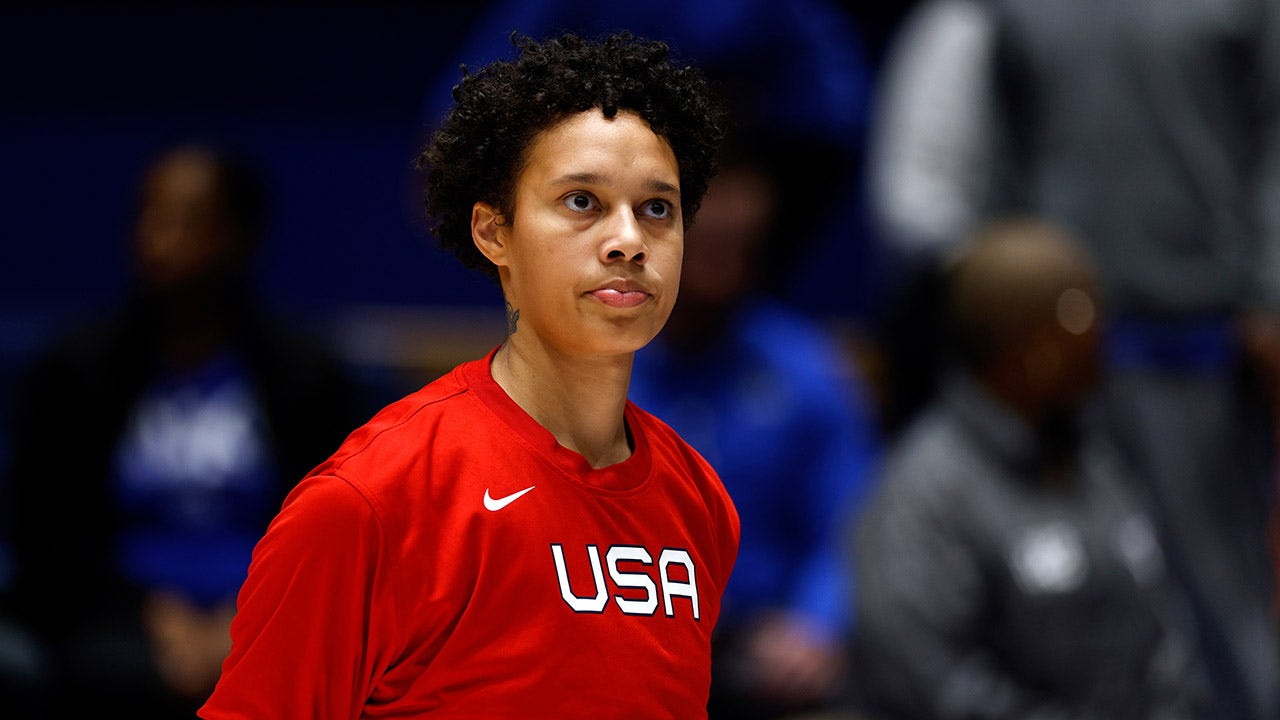
Brittney Griner says she was subjected to inhumane conditions during her nearly 10-month-long detainment in Russia, which included her final stay at a Russian penal colony, where the WNBA star says she was forced to work on helping to produce military clothing.
In her first sit down interview after being released in December 2022 in a prisoner exchange, Griner detailed her living conditions in an interview with ABC News’ “Good Morning America.”
WNBA star and two-time Olympic gold medalist Brittney Griner is escorted from a courtroom after a hearing in Khimki, just outside Moscow, on Aug. 4, 2022. (AP Photo/Alexander Zemlianichenko, File)
“The mattress had a huge bloodstain, and they give you these thin two sheets, so you’re basically laying on bars,” Griner said of her initial detainment at Correctional Colony No. 1, or IK-1 as it is more commonly referred to.
“From the middle of my shin to my feet stuck through the bars, which in prison, you really don’t want to stick your leg and arm through bars because someone could go up and grab it, break it, twist it and that’s what was going through my mind.”
Griner was arrested at a Russian airport in February 2022 after it was discovered that she had been traveling with cartridges containing cannabis oil. She had been traveling to Russia to play basketball in the offseason and credited the mistake as simply a “mental lapse.”
Griner was swiftly taken into custody to await her fate.

Brittney Griner, #15 of the US National Team, warms up prior to their exhibition game against the Duke Blue Devils at Cameron Indoor Stadium on Nov. 12, 2023 in Durham, North Carolina. (Lance King/Getty Images)
BRITTNEY GRINER BLAMES LEAVING CANNABIS OIL CARTRIDGES IN LUGGAGE BEFORE RUSSIA ARREST ON ‘MENTAL LAPSE’
During her detainment, Griner said her access to resources was limited. She was given a roll of toilet paper that was meant to last her a month. However, there were some times when even those needs were not being met.
“There was like two, three months where we didn’t get anything.”
She continued, “It was like 15 years ago that toothpaste was expired. We used to put it on the black mold to kill the mold on the walls.”
After her trial, Griner was sentenced to nine years in a Russian labor camp, IK-2.
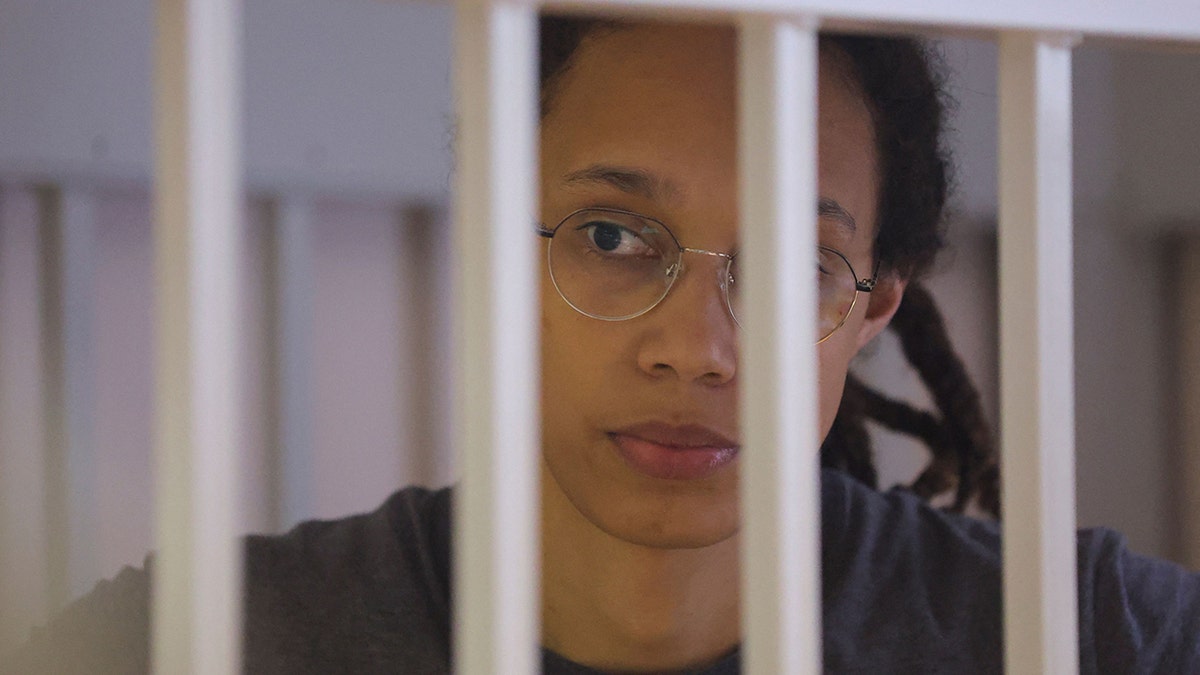
A Russian court found Brittney Griner guilty of smuggling and storing narcotics after prosecutors requested a sentence of nine and a half years in jail for the athlete. (EVGENIA NOVOZHENINA/POOL/AFP via Getty Images)
While there, Griner worked to cut fabric for military uniforms.
“It’s a work camp,” she recalled. “You go there to work. There’s no rest.”
“So I’m picking up these big beams of fleece and cotton and silk. We put it on this machine, and you roll it out a hundred times, clamp it, cut it.”
Griner was released in December 2022 as part of a prisoner swap for arms dealer Viktor Bout. She returned to the Mercury last season. She was an All-Star for the eighth time in her career.
Fox News’ Ryan Gaydos contributed to this report.
Follow Fox News Digital’s sports coverage on X, and subscribe to the Fox News Sports Huddle newsletter.
Sports
The Dodgers bullpen was turning a corner. Now, a spate of injuries has cut into its depth
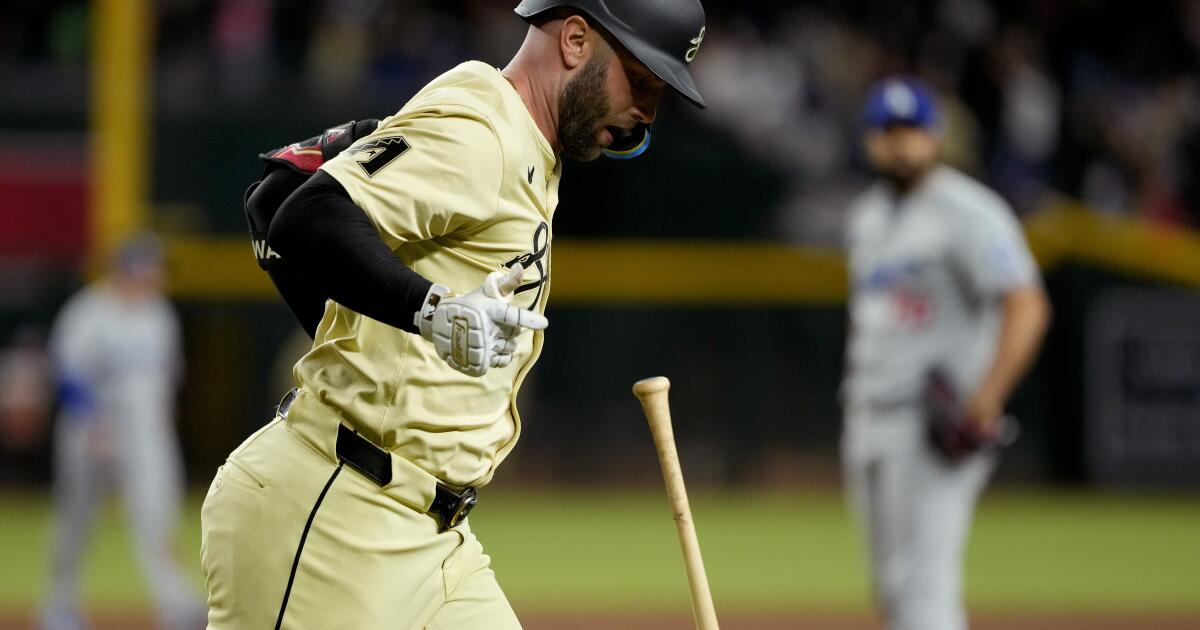
A swarm of bees might have delayed the start of action.
But it was a disappearance of depth in the bullpen that stung the Dodgers most Tuesday night.
With the score tied in the ninth, and then with the Dodgers leading by one in the 10th, the club found itself with few appealing options against the Arizona Diamondbacks.
Closer Evan Phillips was unavailable because of a heavy recent workload. Right-handers Joe Kelly and Daniel Hudson had been burned earlier in the game. Typically, that would mean a save opportunity for the other high-leverage relievers on the roster, such as Brusdar Graterol, Ryan Braiser or Blake Trienen. But each of those three was out with injuries.
So, with the game on the line, recent minor-league call-up Nabil Crismatt got the call instead.
Despite a clean ninth inning that forced the game into extras, Crismatt — a journeyman right-hander with his sixth team in six years — ultimately met the fate many Dodger fans would have feared.
Three pitches into the 10th, he left a changeup up that Christian Walker belted out. The two-run blast walked the Diamondbacks off for a 4-3 win.
“It’s just one of those days,” manager Dave Roberts said. “You’ve got to reset and pick up the pieces, as far as [who is available in] the ‘pen for tomorrow.”
Indeed, for at least the near future, situations similar to Tuesday might not be all that rare.
The Dodgers are nowhere near having their full complement of relievers at the moment. Much of the bullpen they envisioned entering the year is currently stuck on the injured list.
Graterol, last year’s primary set-up man, remains a long way off with a nagging shoulder injury, one that has sidelined him since the start of the year. Treinen, the former ace reliever who has hardly pitched at all the last two years, is nearing a return from a couple broken ribs, but will need at least two more minor-league rehab outings Wednesday and Thursday before he is cleared to return to the majors.
Like Trienen, who got hurt on a comebacker in spring training, Brasier suffered his own freak injury this week, when he felt something “blow up” in his calf while performing a normal set of pregame warm-up sprints.
“I felt like I was getting to a spot where I was feeling really good, so it’s obviously frustrating,” said Brasier, whose 4.63 ERA belied his importance to the bullpen.
While the team was still awaiting MRI results as of Tuesday, the Dodgers feared Brasier would face an extended absence. He compared this right calf strain to one he suffered in his left calf in 2021. That injury, he said, took close to two months to heal.
“He’s done his other one before, so it’s gonna be a while,” Roberts said. “It’s gonna be a slow process for him.”
Two games into Brasier’s absence, the Dodgers were already feeling the consequences.
On Monday night, the Dodgers held a four-run lead in the ninth, a spot that seemed tailor-made for Brasier — especially given his up-and-down performance early on. But the Dodgers elected to use Phillips, evidently uncomfortable trusting the only other available arm at that point — recently recalled right-hander Gus Varland — even in a non-save situation.
That outing marked Phillips’ fourth in seven days, with the closer getting heavy usage during the Dodgers’ recent six-game winning streak.
That ruled Phillips out for Tuesday (five relief outings in eight days is a red line not only for the Dodgers, but other clubs around MLB) and left Roberts with few options in the final innings of the game.
“We’re on the back end of nine [games] in a row, and when you win a lot of games, you use your leverage guys,” Roberts said. “That’s part of it. You’ve got to figure out ways to navigate.”
After summoning Michael Grove and Joe Kelly in the sixth and seventh innings, respectively, then watching Hudson blow a rare lead in the eighth, the manager had only Crismatt and Varland left to choose from once the game reached the ninth. He elected for Crismatt. Then, he watched on helplessly as the Diamondbacks snatched the game.
“That’s just where we were at,” Roberts said. “He threw up a zero that first inning, and unfortunately we couldn’t tack on more than one [run] in that 10th.”
This is where the Dodgers could be for a while, trying to mix and match a bridge to Hudson and Phillips on nights they’re available, or cover save situations in the games they’re being rested.
Roberts is hopeful Treinen’s return will help — though a 35-year-old with just five appearances over the last two seasons is hardly guaranteed a smooth reacclimation.
The Dodgers have also gotten high-leverage production from Grove (who has a 6.88 ERA overall, but a 3.00 ERA in the final three innings of games) and left-hander Alex Vesia (whose 1.76 ERA is second-best in the ‘pen behind Phillips, despite a 1.304 WHIP) of late, but they were never pegged for such key roles, either.
Instead, the Dodgers planned for Graterol, Brasier, Kelly and Hudson to be their key middle relievers this year. Now, Hudson represents the only non-injury worry, after Kelly tweaked his groin Tuesday — though not bad enough to leave the game — after fielding a ground ball in the seventh inning.
“We’ll just kind of see where he’s at [tomorrow] physically,” Roberts said, saying the team will reevaluate Kelly after Thursday’s off-day.
All the renewed injury concerns come just as the Dodgers seemed to be finding their footing in the bullpen. Following a woeful opening couple of weeks, when they ranked 20th in reliever ERA through their first 23 games, the bullpen had given up only two earned runs in more than 27 innings to begin this week’s road trip. Entering Tuesday, they were 12th in the majors with a 3.64 ERA.
But then, in the span of six outs, the dwindling depth caught up with them again. One of their few reliable relief arms faltered. One of their many risky ones got taken deep. And Roberts was left postgame with no choice but to look ahead.
“We’ve got to weather it,” Roberts said. “I’m sure we’ll be churning through some guys in the next couple weeks.”
-

 Education1 week ago
Education1 week agoVideo: Dozens of Yale Students Arrested as Campus Protests Spread
-

 News7 days ago
News7 days agoLarry Webb’s deathbed confession solves 2000 cold case murder of Susan and Natasha Carter, 10, whose remains were found hours after he died
-

 World6 days ago
World6 days agoHaiti Prime Minister Ariel Henry resigns, transitional council takes power
-

 Politics1 week ago
Politics1 week agoFetterman hammers 'a–hole' anti-Israel protesters, slams own party for response to Iranian attack: 'Crazy'
-

 World1 week ago
World1 week agoPeriod poverty still a problem within the EU despite tax breaks
-

 World7 days ago
World7 days agoUS secretly sent long-range ATACMS weapons to Ukraine
-

 News6 days ago
News6 days agoFirst cargo ship passes through new channel since Baltimore bridge collapse
-

 World1 week ago
World1 week agoTurkey’s Erdogan meets Iraq PM for talks on water, security and trade

